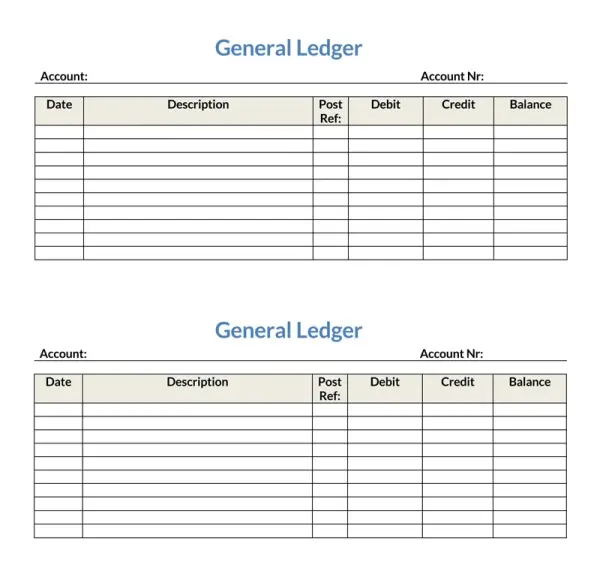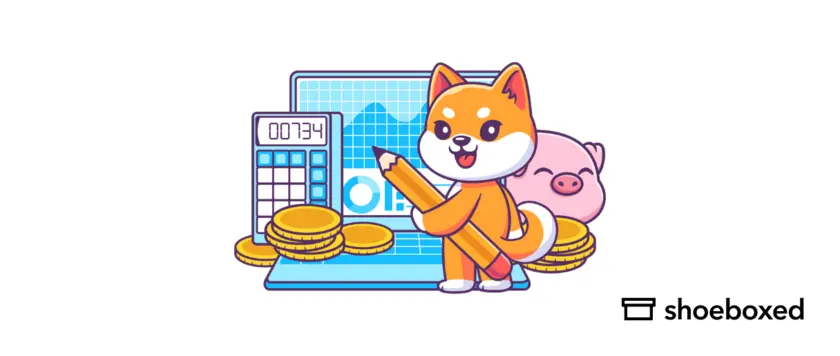To successfully grow a small business, it is crucial to keep detailed and accurate records, and for convenience’s sake, to have them all in one place. One of the most important accounting records is the general ledger. The general ledger is the foundation of your business and accounting system because it is where all your business accounts and activity that takes place within them are recorded and tracked.
Here we will cover what a general ledger is, what information is kept in a general ledger, how to create a general ledger, and why general ledgers are so important to the health of your business.
What is a general ledger?
A general ledger is the record-keeping system used to record all of a company’s financial data as it transpires. It provides a record of every financial transaction that has taken place over the lifetime of the business.
These posts are validated by determining a trial balance based on the debit and credit accounts, also known as double-entry accounting. Based on this information, financial and company reports can be generated to reflect the financial health of a business.
What is a general ledger? By The Finance StorytellerWhat is a general ledger report?
The general ledger report reflects all of the financial activity of a business.
What is double-entry bookkeeping and what does it have to do with general ledgers?
The concept of double-entry bookkeeping is that every transaction affects the finances of a business in two ways: one as a debit and the other as a credit. The general ledger is a record of the two sides of each transaction.
What is a general ledger reconciliation?
A general ledger reconciliation verifies the accuracy of the account balances in the general ledger by comparing the general ledger’s account balances with other supporting documentation.
What does a general ledger look like?
Here is an example of a general ledger:

General ledger example
What does a general ledger of a company contain?
A general ledger consists of a set of accounts that show the actual amounts of what a business has received or spent. Each account is a record summarizing an asset, expense, liability, equity, or revenue. Each account has its own general ledger. Note the two ledgers above. Each one is used for a different type of account.
The transactions from the general journal are transferred over to the general ledger on an account-by-account basis. In the general ledger, every transaction is posted to subsidiary accounts such as accounts receivable, accounts payable, cash, and so on. These transactions are posted using a double-entry accounting method. This method breaks all of the transactions down into all income and expenses as debits and credits.
Key information is recorded with each general ledger entry. This includes the date of the transaction in the far left column. The description is in the next column which includes the reason behind the transaction. To the right of the description is the number of the journal entry associated with the journal transaction. After the post reference number, the amount is posted as a debit or credit. The new balance will then be reflected in the balance column after the net change from the transaction.
The summaries or totals of each of these accounts is used to generate financial statements and reports. For example, the balance sheet reflects the assets and liability accounts, and the income statement summarizes the annual revenue and expense accounts.
Note: To learn more accounting terms, check out our mammoth list of 45+ bookkeeping resources!
Stop doing manual data entry 🛑
Outsource receipt scanning to Shoeboxed’s scanning service and free up your time for good. Try free for 30 days! ✨
Get Started TodayWhat are general ledger codes for small businesses?
A general ledger code is a number that is used to record business transactions in the ledger. General ledger codes are assigned to the different debit or credit entries and are used to designate a category type of business transaction. General ledgers make it easy to get a summary or total of a specific category or account at any given time.
A complete listing of these accounts is known as a chart of accounts. The general ledger codes consist of six digits where each digit represents a more detailed breakdown of the transaction. The first digit represents the type of transaction.
Here is a chart of numbers and the type of transaction each number typically represents:
First Digit of Code |
Type of Transaction |
1 |
Asset |
2 |
Liability |
3 |
Fund Balance |
4 |
Revenue |
5 |
Expense |
8 |
Transfer |
General ledger codes for small businesses showing the chart of numbers and types of transactions
The second, third, and fourth digits indicate the major, minor, and subcategories respectively. The fifth and sixth digits are an even more detailed breakdown.
Steps on how to create a general ledger
Here are the steps when creating a general ledger:
Create a general ledger like the example above for each type of category or account. All of these transactions will ultimately fall into either assets, liability, equity, expense or revenue accounts.
Transfer the financial information from the general journal over to their associated accounts on the general ledger with the date and reason for the transaction.
Put the number of the journal transaction on the general ledger account as a means for cross-referencing.
Debit and credit the appropriate accounts. Each entry must appear in two categories. It will appear once as a debit and once as a corresponding credit. The debit and credit added together will equal zero.
Keep a running balance of the debits and credits to make sure the accounts balance after all transactions have been entered.
Steps on how to balance a general ledger
On the left side of the balance sheet, enter all of the debit accounts.
On the right side of the balance sheet, enter all of the credit accounts.
Consider how each transaction affects a second corresponding account and note whether it increases or decreases the second account.
Calculate the balance for each account in the general ledger.
Update the balance sheet.
If credits equal debits, then the books are balanced.
Another way to balance the general ledger is to generate a trial balance. To do this, list all of the ledger accounts along with their balances. Calculate the total each for debits and credits. The two should match if balanced.
Never lose a receipt again 📁
Join over 1 million businesses scanning receipts, creating expense reports, and reclaiming multiple hours every week—with Shoeboxed.✨
Get Started TodayFrequently asked questions about general ledgers
What are general ledger codes?
General ledger codes are numbers used to record financial transactions of a business in the general ledger. Click to learn more.
What is a general ledger reconciliation?
A general ledger reconciliation verifies the accuracy of the account balances in the general ledger by comparing the general ledger’s account balances with other supporting documentation.
Can general ledgers be used for personal finance?
General ledgers can be used for personal finance, but they are commonly used for businesses. However, by using a general ledger for personal finance, you get a better understanding fo your financial situation to make better decisions for budgeting, saving, and investing.
Caryl Ramsey has years of experience assisting in different aspects of bookkeeping, taxes, and customer service. She uses a variety of accounting software for setting up client information, reconciling accounts, coding expenses, running financial reports, and preparing tax returns. She is also experienced in setting up corporations with the State Corporation Commission and the IRS.
About Shoeboxed!
Shoeboxed is a receipt scanning service with receipt management software that supports multiple methods for receipt capture: send, scan, upload, forward, and more!
You can stuff your receipts into one of our Magic Envelopes (prepaid postage within the US). Use our receipt tracker + receipt scanner app (iPhone, iPad and Android) to snap a picture while on the go. Auto-import receipts from Gmail. Or forward a receipt to your designated Shoeboxed email address.
Turn your receipts into data and deductibles with our expense reports that include IRS-accepted receipt images.
Join over 1 million businesses scanning & organizing receipts, creating expense reports and more—with Shoeboxed.
Try Shoeboxed today!



